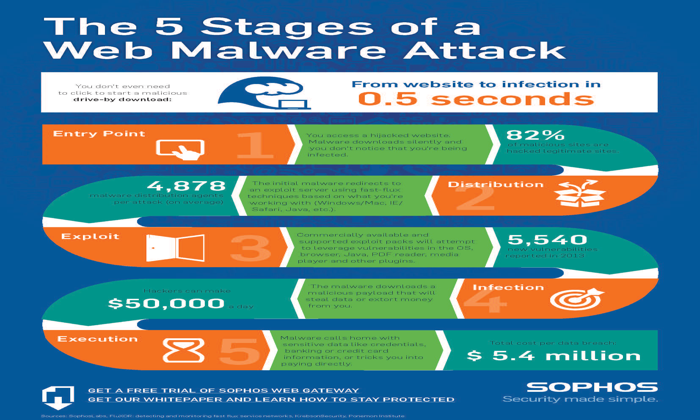Malware targeting software developers has become an alarming trend, with cybercriminals increasingly deploying their tactics through fake GitHub repositories. According to recent research from Kaspersky, these threats are particularly menacing as they exploit the openness of source code, making it easier for attackers to disguise malicious projects as legitimate software. Developers are often lured into downloading infected code, which can lead to severe cybersecurity threats, including the loss of sensitive information and access to cryptocurrency wallets. With the rise of open source code risks, it’s imperative for developers to adhere to GitHub security best practices to safeguard their projects. As hackers continue to innovate, understanding the landscape of malware targeting software developers is crucial for maintaining a secure coding environment.
In the realm of software development, the increasing prevalence of malicious software aimed at programmers has raised significant concerns. This type of malware, often disguised within fraudulent repositories on platforms like GitHub, poses serious risks to developers’ projects and sensitive information. Cybercriminals leverage the trust inherent in open source code to propagate their attacks, exploiting the very tools that developers rely on for collaboration and efficiency. As these threats evolve, it is essential for developers to remain vigilant and adopt best practices for cybersecurity. By recognizing the dangers associated with these deceptive coding practices, developers can better protect themselves against the insidious nature of malware targeting their craft.
Understanding Malware Targeting Software Developers
Malware targeting software developers has become a pressing concern in today’s digital landscape. With the proliferation of open source code, developers often rely on platforms like GitHub to source libraries and components that accelerate their projects. Unfortunately, this reliance also opens the door to cybersecurity threats, as malicious actors have cleverly disguised malware within fake repositories. These deceptive projects are crafted to look legitimate, which makes it challenging for even the most vigilant developers to discern the true nature of the code they are downloading.
The implications of this malware are severe, as they not only compromise the security of developers’ machines but also put their projects and clients at risk. For instance, malware for cryptocurrency wallets can extract sensitive information such as private keys and transaction histories, leading to significant financial losses. Developers must be aware of these threats and implement measures to protect themselves, including rigorous scrutiny of any third-party code they consider integrating into their applications.
Frequently Asked Questions
What are the risks of fake GitHub repositories for software developers?
Fake GitHub repositories pose significant risks for software developers as they may contain malware designed to compromise systems. Cybercriminals create these deceptive repositories to appear legitimate, tricking developers into downloading malicious code. Developers must remain vigilant and verify the authenticity of repositories before using any open source code.
How can software developers protect themselves from cybersecurity threats on GitHub?
To protect against cybersecurity threats, software developers should implement GitHub security best practices, such as verifying repository authenticity, reviewing code before integration, and using tools to detect vulnerabilities. Regularly updating dependencies and being cautious of third-party code can also help mitigate risks associated with malware targeting software developers.
What types of malware are commonly found in projects targeting cryptocurrency wallets?
Common types of malware targeting cryptocurrency wallets include clipboard hijackers and keyloggers. These malicious programs can intercept wallet addresses or capture sensitive information like passwords. Developers should be particularly cautious of projects claiming to manage cryptocurrency wallets, as they may include hidden malware designed to steal assets.
What are open source code risks for software developers?
Open source code risks for software developers include exposure to malicious code hidden within seemingly legitimate repositories. Cybercriminals exploit the trust associated with open source by embedding malware, which can lead to data breaches, unauthorized access, or financial loss. Developers should audit and test open source components thoroughly before use.
How has GitVenom impacted software developers worldwide?
GitVenom has impacted software developers globally by spreading malware through compromised Git repositories, primarily affecting developers in Russia, Brazil, and Turkey. This malware exploits vulnerabilities in Git tools, enabling attackers to access sensitive information and disrupt development processes. Developers should ensure they use secure coding practices and keep their tools updated to mitigate the risks.
What should developers do before integrating third-party code from GitHub?
Before integrating third-party code from GitHub, developers should thoroughly review the code for any malicious scripts or vulnerabilities. It is essential to check the repository’s credibility, read user reviews, and analyze commit histories. Implementing security tools to scan for malware can also help ensure that the code is safe for use.
What is the significance of Kaspersky’s findings on malware targeting software developers?
Kaspersky’s findings highlight the growing threat of malware targeting software developers, particularly through fake GitHub repositories. The research emphasizes the need for developers to exercise caution when using open source code, as cybercriminals increasingly employ sophisticated tactics to deceive them. This underscores the importance of cybersecurity awareness in the software development community.
| Key Point | Details |
|---|---|
| Targeted Audience | Software developers are the primary targets of this malware. |
| Distribution Method | Hackers use fake GitHub repositories to distribute malware. |
| Types of Malware | Malware includes clipboard hijackers and keyloggers targeting cryptocurrency wallets. |
| Example Incident | A fraudulent Telegram bot project led to significant financial theft. |
| Data Theft Method | Sensitive information is sent to hackers via Telegram. |
| Geographical Spread | Infections are concentrated in Russia, Brazil, and Turkey. |
| Additional Threats | Variants like XCSSET can steal data from multiple applications. |
Summary
Malware targeting software developers has become a pressing issue as hackers increasingly exploit open-source platforms like GitHub. This rise in cyber threats highlights the importance for developers to exercise caution when integrating third-party code. Ensuring robust security practices and thorough code reviews can help mitigate risks associated with malware that seeks to steal sensitive information and compromise cryptocurrency assets.
Malware targeting software developers has become an alarming trend in today’s digital landscape, as cybercriminals increasingly exploit vulnerabilities within code-sharing platforms like GitHub. Recent studies reveal that hackers are spreading malicious software through fake GitHub repositories, deceiving developers into downloading compromised open source code. With the rise in cybersecurity threats, particularly those involving malware for cryptocurrency wallets, it is crucial for developers to adopt GitHub security best practices to safeguard their projects. Many of these fake projects are designed to appear legitimate, making it essential for programmers to scrutinize third-party code thoroughly. As the line between legitimate and malicious code blurs, understanding the risks associated with open source code has never been more important for the development community.
In recent times, malicious software specifically targeting the developer community has surged, with fraudsters leveraging deceptive tactics to compromise coding environments. The proliferation of counterfeit repositories on platforms like GitHub highlights the significant cybersecurity risks that programmers face in their daily work. Many developers unknowingly interact with fake projects that can lead to severe consequences, including the theft of sensitive information and financial loss. As more individuals rely on shared code for efficiency, the importance of recognizing and mitigating these dangers becomes paramount. Emphasizing robust security practices is essential for anyone involved in software development to protect themselves and their assets.
















Leave a Reply